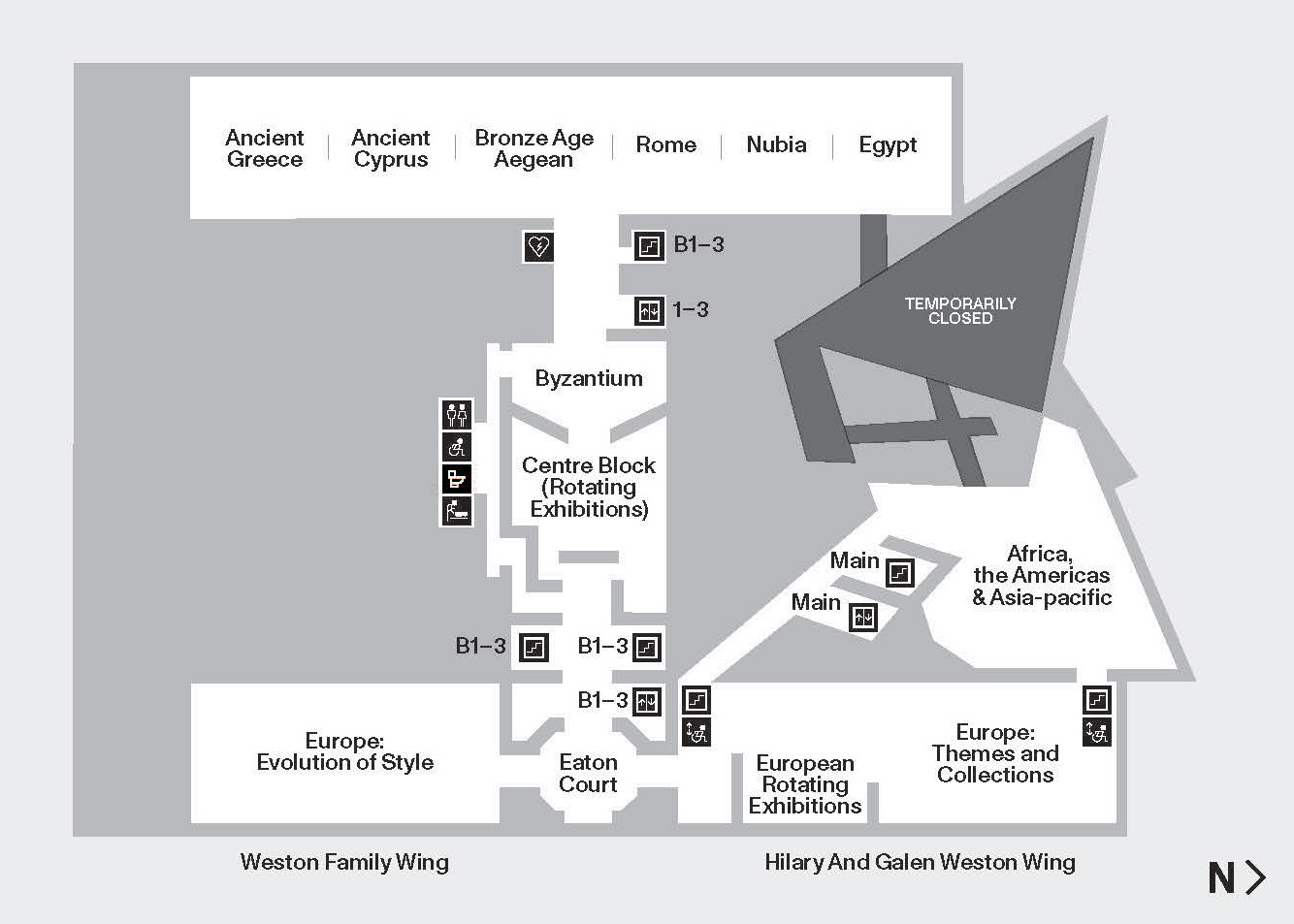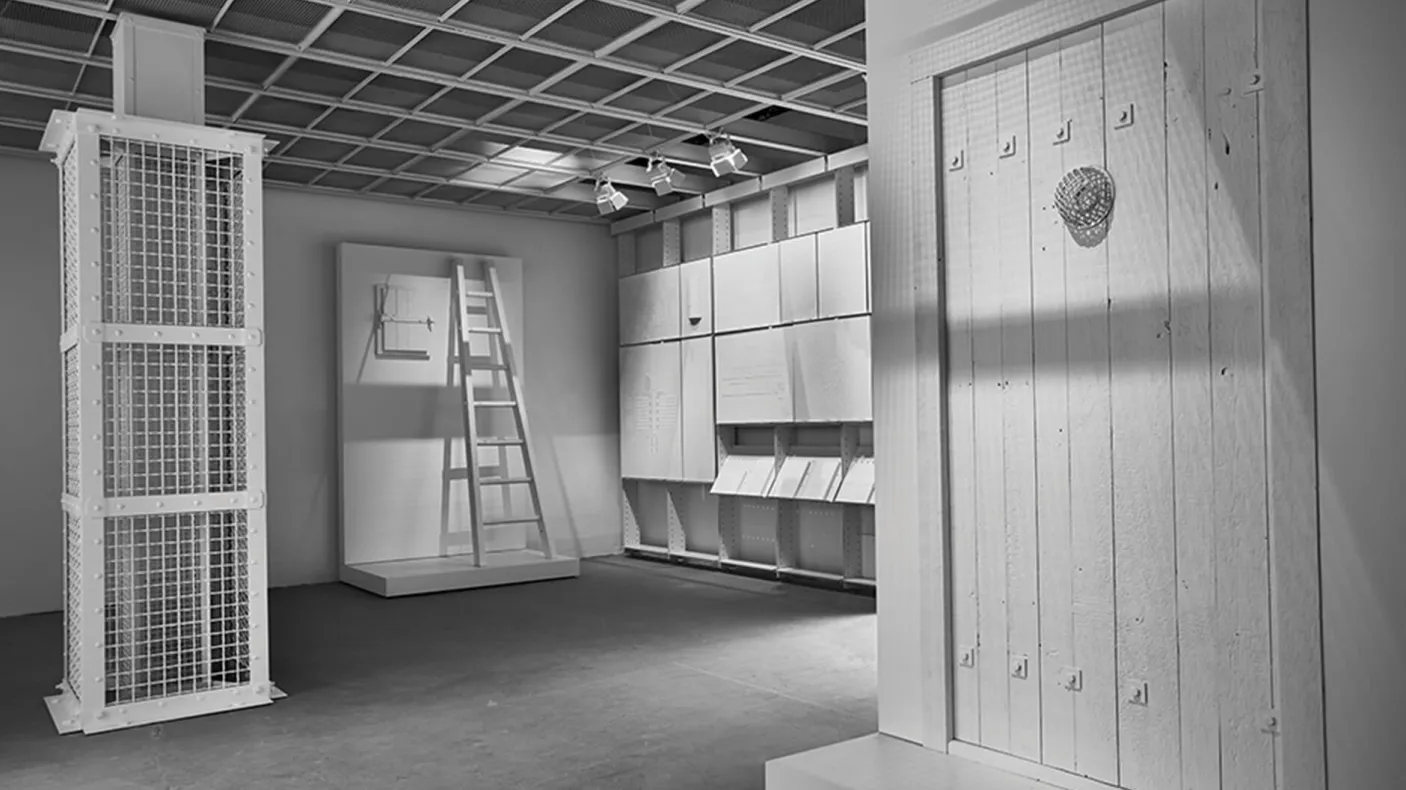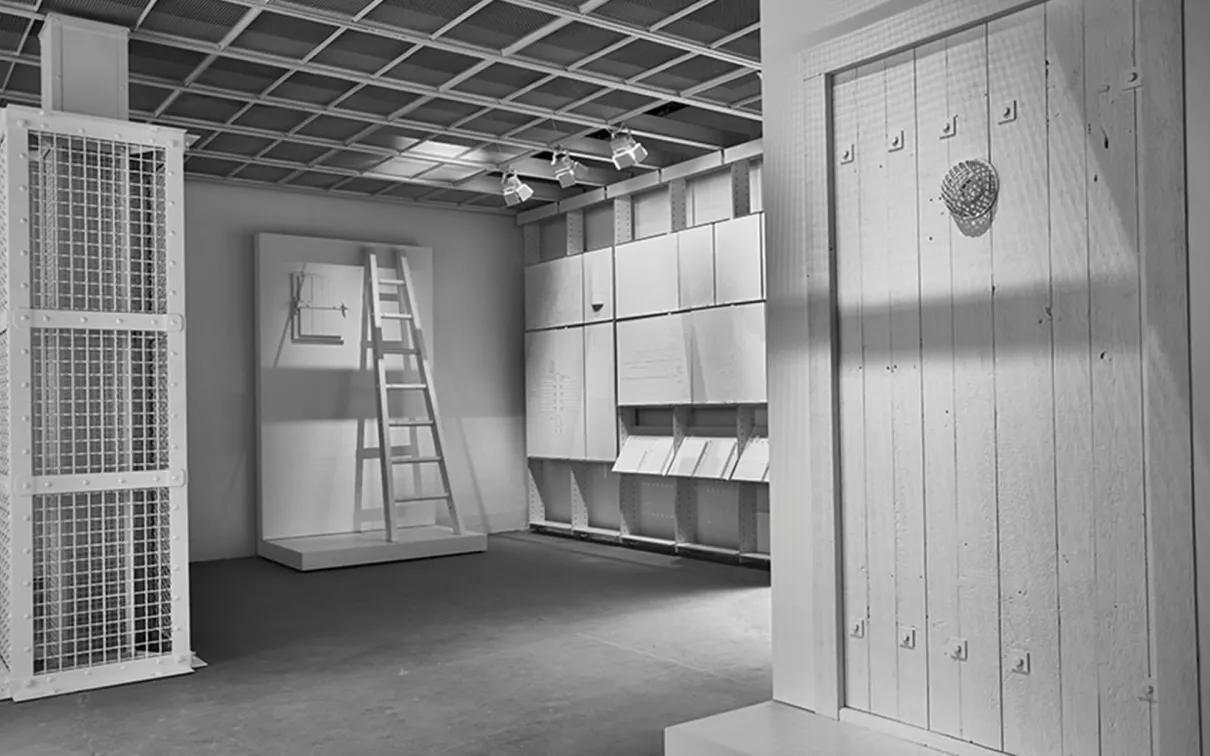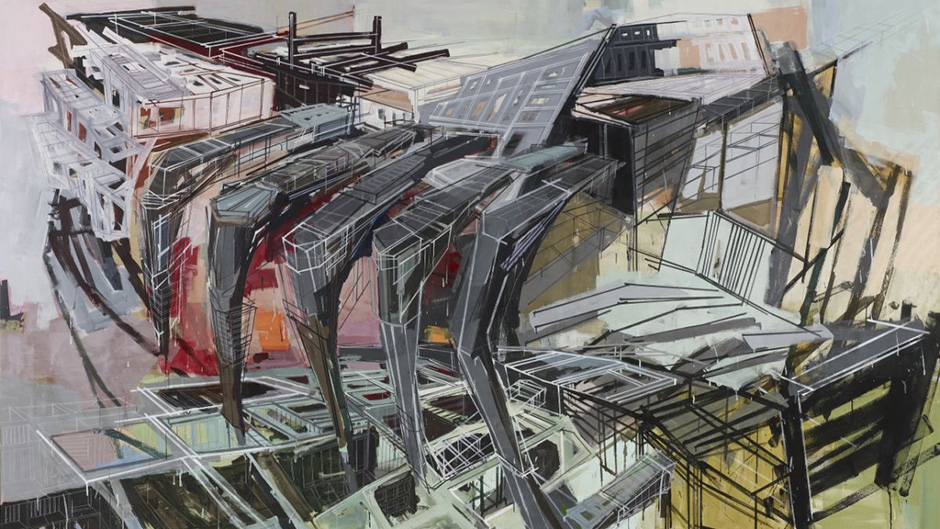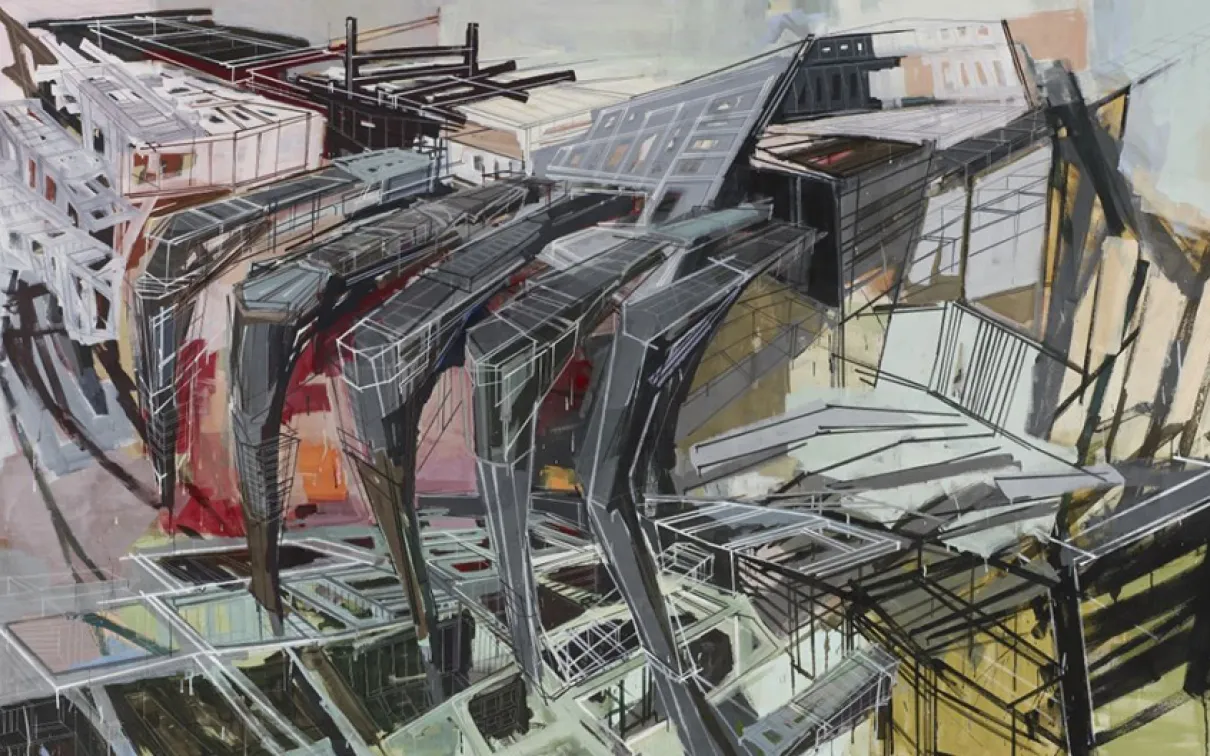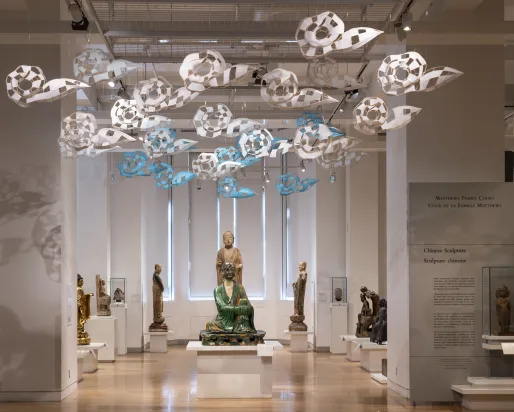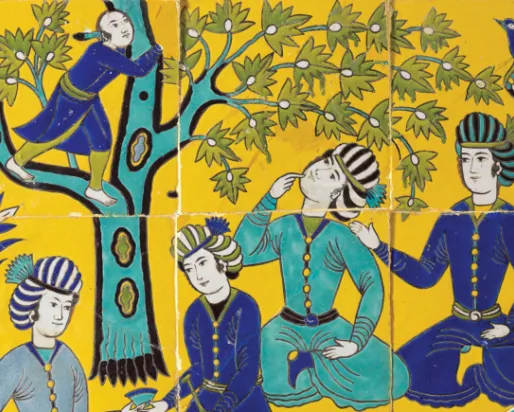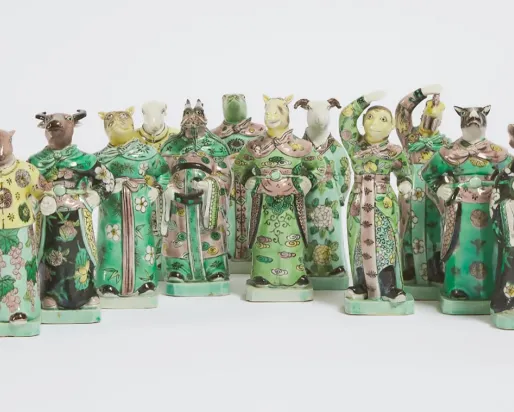The Evidence Room
Date
Location
About
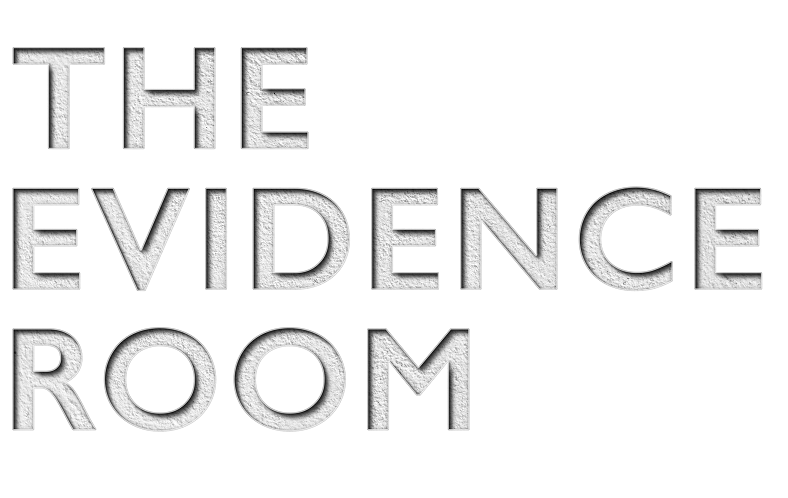
The greatest crime ever committed by architects — Dr. Robert Jan van Pelt, exhibition principal and University Professor, University of Waterloo School of Architecture
An examination of the chilling role architecture played in constructing Auschwitz.
The Evidence Room is a powerful installation which reconstructs key objects used in the forensic analysis of the architecture of Auschwitz. Historian Robert Jan van Pelt introduced the objects as evidence in a court case to demonstrate that Auschwitz was purposefully designed as a death camp.
This ground-breaking research became a source for a new and emerging discipline—architectural forensics—encompassing architecture, technology, history, law and human rights.
The Evidence Room, constructed entirely in white, focuses on the coldly calculated architectural decisions which culminated in a factory of death. Full-scale reconstructions of three key components of the Auschwitz gas chambers—a gas column, gas-tight door, and gas-tight hatch—and over 60 plaster casts of architectural evidence, such as blueprints, contractors’ bills and photographs, speak eloquently as silent material witnesses to the horrors of Auschwitz.
This haunting installation stands as a tangible reminder of the Holocaust, one of the darkest periods of the 20th century. The Evidence Room compels us to confront the devastating consequences of our potential inhumanity towards one another.
Highlights
The Evidence Room
An evidence room is the place where evidence for a court examination of a crime can be securely stored until it can be used in the court case. Here, The Evidence Room is an exhibition that shows undeniable forensic architectural evidence that Hitler’s National Socialist government, the Nazis, designed and carried out the murder of over one million Jews at Auschwitz-Birkenau during the Holocaust.
The Trial
In 1996, a Holocaust denier sued author Deborah Lipstadt for libel. Lipstadt had claimed the denier was a falsifier of history, leading to a famous trial in 2000 in London, England. In this trial, Professor Robert Jan van Pelt from the University of Waterloo, Ontario, presented key forensic architectural evidence proving the Nazis, who created Auschwitz-Birkenau in World War ll, did so with the intent to commit genocide. The evidence won the trial for Lipstadt, and for victims and survivors of the Holocaust.
The Holocaust
During World War ll (1939-1945), the Nazis and their collaborators systematically persecuted and murdered six million Jews and in addition to this, other groups they considered “racially inferior” for religious, political, ideological, physical, and behavioural differences. Victims perished in ghettos, by summary execution, in concentration and death camps, and death marches.
Auschwitz
Auschwitz-Birkenau, the largest of the concentration and death camps established in German-occupied Poland, served concurrently as a slave labour camp and as a centre for the rapid mass murder of Jews. Chosen as the central location for the annihilation of the Jewish people, it was fitted with gas-chamber-equipped facilities and crematoria. Killing was carried out by means of Zyklon B gas, a cyanide delousing product that had previously been tested on Russian prisoners of war.
In Auschwitz-Birkenau, more than 1,000,000 Jews, 70,000 Poles, 25,000 Roma, and some 15,000 prisoners of war from the USSR and other countries were murdered.
Explore More
The Auschwitz-Birkenau Memorial and Museum
The Sarah and Chaim Neuberger Holocaust Education Centre
United States Holocaust Memorial Museum
Museum of Tolerance (Simon Wiesenthal Centre, Los Angeles)
Canadian Guide to Programs and Services for Holocaust Survivors and their families
Support Group for Adult Children of Holocaust Survivors
Partners & Sponsors
Organized by the University of Waterloo School of Architecture
The Evidence Room was originally created for the 15th International Architecture Exhibition of the 2016 Venice Biennale by a team from the University of Waterloo School of Architecture, including O'Donovan Director Anne Bordeleau, architecture professors Donald McKay and Robert Jan van Pelt, independent curator and editor Sascha Hastings, and students and consultants. The installation at the ROM was co-curated by Anne Bordeleau, Donald McKay, Robert Jan van Pelt, with Waterloo alumna and project manager Piper Bernbaum, and a team of students.
Lead Patrons
Rob & Penny Richards, The Gerald Schwartz & Heather Reisman Foundation
Supporting Patron
Larry & Judy Tanenbaum Family
Exhibition Patron
The Jay and Barbara Hennick Family Foundation
The ROM would also like to thank the following donors for helping make this exhibition possible: Hal Jackman Foundation, Ron and Vanessa Kimel & Family, KPMB Architects, Sam Mizrahi, Jonas & Lynda Prince, Sandra Simpson, Jay Smith & Laura Rapp, The Jack Weinbaum Family Foundation, Joy Cherry Weinberg & Family, Henry Wolfond & Rochelle Reichert, The Petkovics Family, Donald McKay, Sr., and Dr. Paul Munk.
